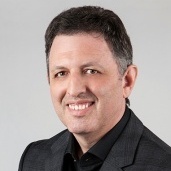
That’s the concept of the MED…which I’m borrowing from Tim Ferriss’ book “The 4 Hour Body”.
When I decided I wanted to lose 20 pounds, I picked up Tim’s book and his discussion of the MED connected with me because I don’t really care about all the details of nutritional science.I just wanted the one-page(or less) plan I could start taking action upon immediately, and I know many people feel that way about their finances. By the way, Tim’s “slow carb diet” works…I’ve lost 20.2 pounds (194.6 to 174.4) and 4% body fat (19.7 to 15.7) in about 3 months by following his plan with probably 75% consistency. Dieting, as well as personal finance, is mostly behavior instead of intellect. If you follow Tim’s plan, you’ll lose weight. If you follow thebasic cash flow financial plan I’m about to outline, you’ll lower your tax bill and increase your net worth over the long term…and that’s probably the biggest difference as seeing the results of good financial behavior may take years or decades instead of weeks or months. One of the greatest gifts we’ve all been given is the power to choose, it’s truly up to you.
I’ll start by outlining the plan, and then explain the details after the fact. Note that this assumes you already have your debt situation under control with no interest-bearing credit card balance, little or no student and/or car loans, and a home mortgage that’s no more than 2x your annual household income. Otherwise you really need to consider first focusing on reducing your debt to more manageable levels.
3 Step MED Cash Flow Plan
- Step 1: Keep about 1-2 months’ worth of living expenses in your checking account.
- Step 2: Keep about 6 months’ worth of living expenses in a high yield savings account or taxable brokerage account holding short term treasury ETF’s or money market mutual funds. If you have any lump sum capital expenses due within the next 3-5 years, this is also the place to keep it.
- Step 3: Invest the rest of your capital in a globally diversified equity fund portfolio in the most tax efficient manner possible.
Remember, this is the MED plan. I’m intentionally leaving out a lot of minor details that a great financial planner can help you fill in to keep you focused on the most important points. In America, I believe that if you 1. Earn an above average household income (roughly $60,000), 2. Minimize your debt, and 3. Follow the above steps, long term wealth building is both simple and inevitable. Not possible, but inevitable. Unavoidable. Unstoppable. The more you complicate it or make excuses, the more likely you are to give up. Remember that “perfection is achieved, not when there is nothing more to add, but when there is nothing left to take away.”
Step 3 is probably the most ambiguous part of the plan. I do have an opinion on what the optimal equity portfolio might look like, which is another area for a great financial planner to add value, but a good starting point for a MED investor might be a fund like VT or ACWI. As of last week, most major brokerage firms are now offering ETF’s commission free.This means you can now buy a portfolio of more than 8,000 stocks across 47 countries commission free and at an annual expense ratio of just 0.09%. That’s truly amazing, and why there has probably never been a better time to be an investor. Some other experts might instead recommend a target date fund as a single fund solution, but the elegance of the above plan is that it automatically builds in a “glide path” based on your personal situation. There are only minor modifications required for a retired investor. With regard to tax-efficiency, first start with tax advantaged accounts like your employer 401(k), HSA’s, and IRA’s. If you’ve maxed out these accounts and still have money left over, owning the same fund or portfolio in a taxable brokerage account is a great choice.
As simple as this plan is, chances are you’re not doing it right now…I frequently find new clients holding way too much in cash, not even maximizing the yield on that cash, poor diversification with the equity funds they own, not taking full advantage of retirement accounts, too many accounts, speculative investments bordering on gambling, and the list goes on. Just as people will dismiss Tim Ferriss’ book on dieting as “too simple”, the same can be said with this financial plan.So how about another quote: “Simplicity is the ultimate form of sophistication.” If you’re at all familiar with the concept of minimalism, you should see the common themes here. Every account and every investment should have a specific purpose, otherwise get rid of the clutter the same way you would with items in your home.
I’m a financial planner, and I believe that great advice on the 20% of details that go beyond the MED can add massive value and be worth well in excess of the fee charged. Additionally, just as you might wonder if I’ll relapse on the 20 lbs I’ve lost over the last 3 months and eventually eat everything in sight, a great financial planner will be there for you when needed. I act as a behavioral coach to clients for ongoing advice and guidance beyond the initial financial plan, empathetically but firmly reminding you “you don’t want to do that (go to cash/sell this/buy that/etc.)” when markets are at extremes. But at minimum, if you’re a well-behaved DIY investor you might want to consider hiring a financial planner for at least an initial second opinion on your plan and portfolio.
Jesse Blom is a licensed investment advisor and Vice President of Lorintine Capital, LP. He provides investment advice to clients all over the United States and around the world. Jesse has been in financial services since 2008 and is a CERTIFIED FINANCIAL PLANNER™ professional. Working with a CFP® professional represents the highest standard of financial planning advice. Jesse has a Bachelor of Science in Finance from Oral Roberts University. Jesse manages the Steady Momentum service, and regularly incorporates options into client portfolios.



There are no comments to display.
Join the conversation
You can post now and register later. If you have an account, sign in now to post with your account.
Note: Your post will require moderator approval before it will be visible.